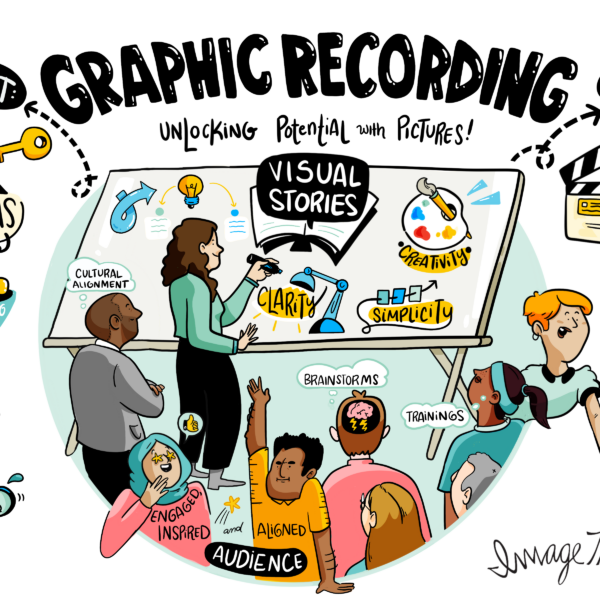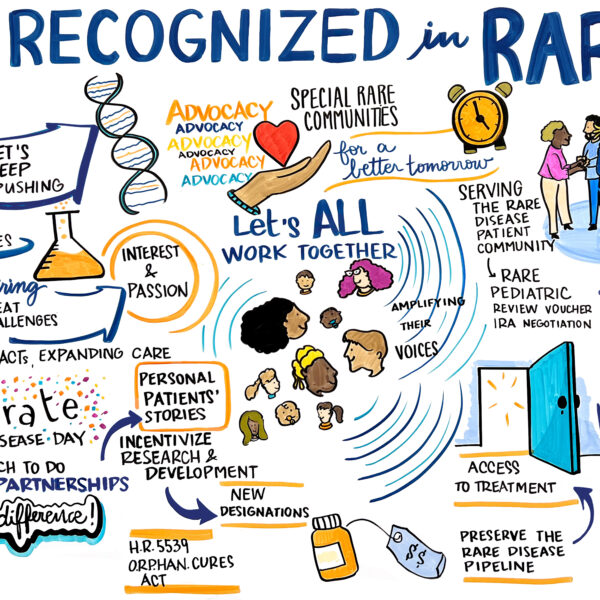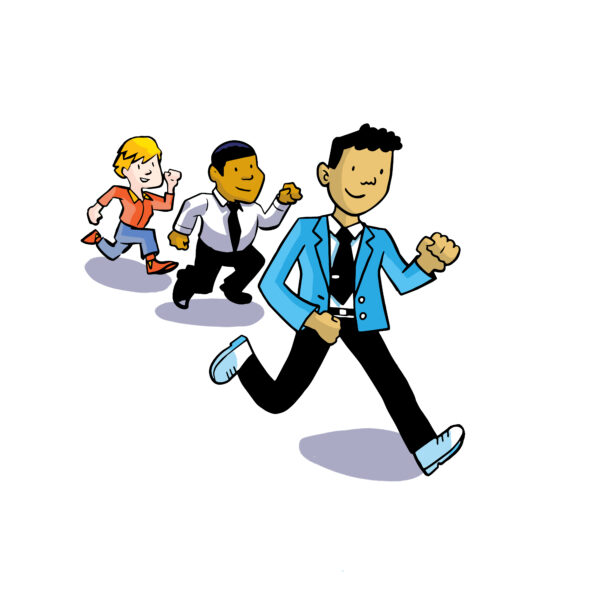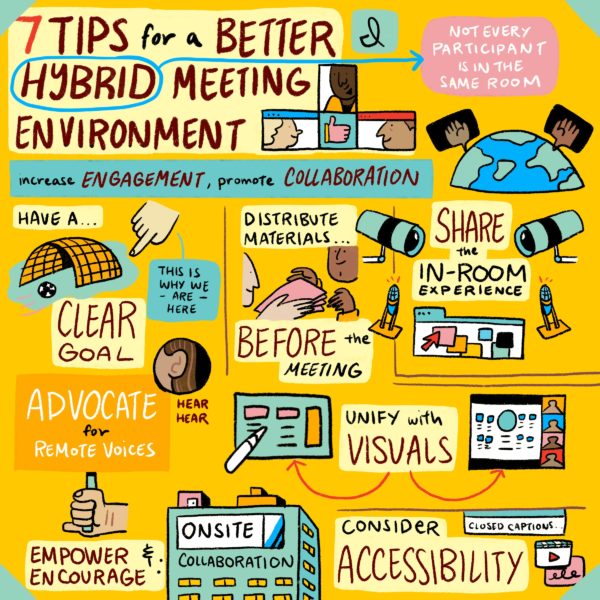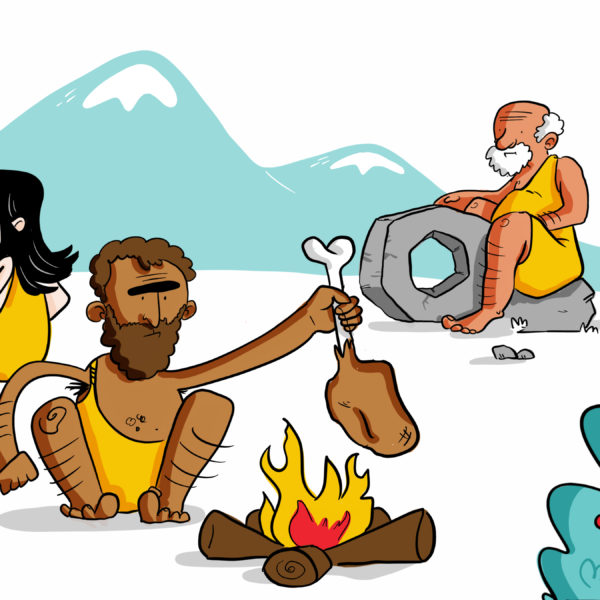The Resurrection of Ask the Expert!
Sam Horvath: Welcome everyone. Thanks for tuning in. However, you’re listening and or watching.
Sam Horvath: This is Ask the Expert! and some of you who are viewing this might say “Hey, that’s familiar. I remember Ask the Expert!”
Sam Horvath: This is a sort of reimagining; resurrection of a format that you know we previously launched at ImageThink. We started Ask the Expert back in the depth of the pandemic, when we sat down with guests. It was a dialogue between our CEO and Founder, Nora Herting, and various guests to discuss creativity and visual language and leadership and neuroscience, and we’re bringing it back because we had a lot of positive feedback.
Sam Horvath: But of course, after the pandemic, things changed – business got back to being the business of graphic recording primarily. And so, we’re looking at a new way of relaunching this and it’s going to be a series of questions and answers with Nora, our Founder, to answer and speak to topics like graphic recording, visual strategy, visual leadership, client successes. All of your wealth of knowledge, Nora, from 15 years running the business of ImageThink.
Previous episodes of Ask the Expert!
Sam Horvath: So, for anybody listening that is curious about some of the past episodes, we talked to Dan Seewald, Mike Rhode, Donna Lichaw, Maureen Taylor, Mara and Sven of Visuality. For those in the industry.
Sam Horvath: But moving forward, I want to welcome my regular guest of honor, Nora Herting, CEO and Founder of ImageThink. Welcome.
Nora Herting: Thanks Sam.
Introduction to ImageThink’s Ask the Expert! series
Sam Horvath: And I guess I should introduce myself. See, I’ll get this intro down to a fine science on on subsequent recordings. I’m Sam Horvath – I’m the CRO of ImageThink. I’ve worked with Nora for the last several years since joining the company, and it’s been a been a pleasure.
Sam Horvath: The big thing that we want to achieve with this: it’s essentially trying to open up your brain and share with other practitioners in the graphic recording space, our clients, potential clients, and otherwise, fans of creativity and different ways of working, different ways of thinking, all the knowledge you’ve accumulated and some hacks and best practices and things that you’ve gathered over those 15 years being in thousands of meetings and conferences.
Ask us questions: info@imagethink.net
Sam Horvath: So, the format of the show is going to be sort of a Q&A.
Sam Horvath: I may have some follow-ups, I’ll kind of lead you through and I’ll just encourage anybody who is listening or tuned in: you can send questions to info@imagethink.net or you can reply below, wherever you’re watching or listening to this, if you have related questions, new questions, anything you know that that again falls into that space of, you know, visualization, creativity, graphic recording, how it works, how to be a more effective leader, how to build better alignment and engagement within your organization – any of those things are fair game and we’ll do our best to get to it, so.
Getting attendees to draw, and why it’s important
Sam Horvath: To jump right in, our first topic today. I want to talk about one of the cornerstones or foundational elements, Nora, to the way you work, whether it’s leading a workshop, whether it’s being on site graphic recording or even within ImageThink.
Sam Horvath: But getting attendees to draw. Anytime you give a keynote, anytime you’re speaking anywhere, you always get people usually up on their feet somehow and you get them drawing with pen and paper. I’m curious, beyond just your background as a graphic recorder and having founded a graphic recording company. Why?
Sam Horvath: Why do you always feel it’s so important to get everybody in the room drawing and putting pen to paper?
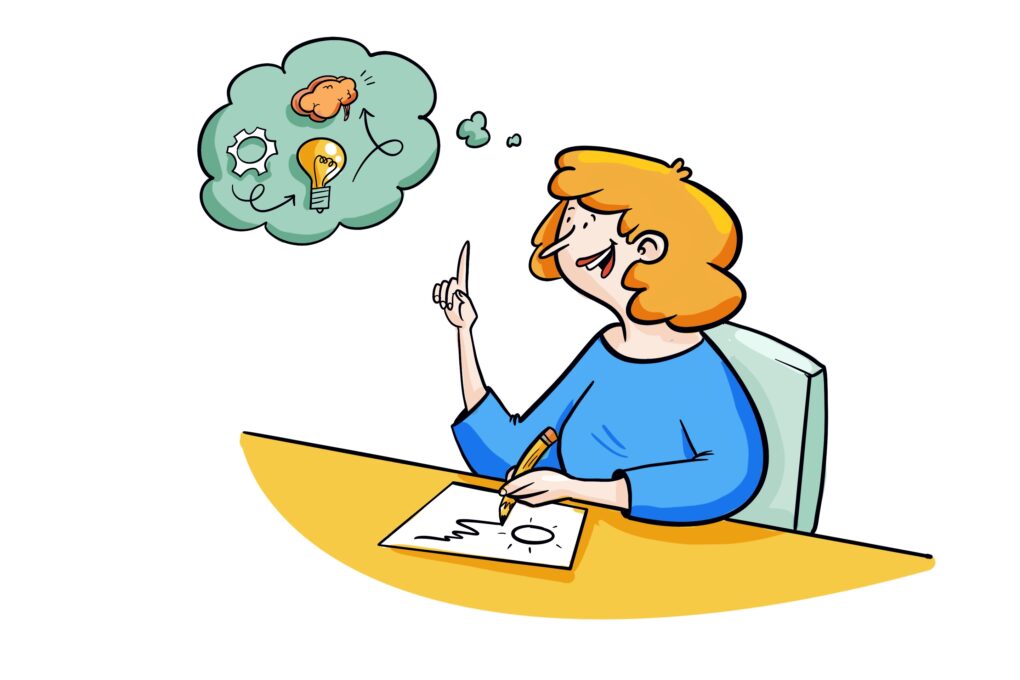
Drawing is an equalizer
Nora Herting: Yeah. Well, I actually think that’s probably why people are interested in my keynotes in my workshops – because it’s really different, right? And it is about the power of visuals and thinking visually. But even if it wasn’t kind of the core message, there’s a lot of benefits to getting people to draw.
Nora Herting: For one, if we’re using it in a strategy session or a session where afterwards, all of these folks need to come together and have real conversations about business outcomes and brainstorming – it’s an incredible equalizer for a group.
Nora Herting: You can pretty much assume there may be some people who had loved to draw, but that sort of sadly, most people haven’t in quite a long time. And so, it’s going to basically level the playing field for everyone feeling a little put on the back foot, and that’s good.
Nora Herting: Because of that, people kind of open up. There’s a lot of laughter that happens. And you know, it’s somewhat a little bit awkward laughter, but it’s a great moment and way to sort of crack people open, leave titles behind and get people out of their comfort zone at the same time.
Nora Herting: So that’s one reason that it can be really powerful.
Drawing is an unexpected ask
Nora Herting: Another one is, it’s unexpected. It’s kind of an unexpected ask.
Nora Herting: So, in not keynotes, but just in facilitating sessions with people; people usually want to have some kind of icebreaker or some kind of team share. We can talk a little more about Ice breakers and what not to do in them, but this is a great one – ask people to draw something about themselves.
Nora Herting: Again because, it’s going to be unexpected for sure, and it’s again going to have a few laughs as well. So that’s another reason. How many sessions of clients come wanting to have a different approach, saying, “We need to think differently about this.” That’s why ImageThink is potentially there or you’re potentially there.
Nora Herting: So, let’s get them thinking differently, immediately, and exercising a different set of muscles.
Leveling the playing field through drawing
Sam Horvath: Yeah, definitely. Having been in plenty of situations where it’s like I may be – we’ve all I guess, been at some point the junior employee in one of those, and you get paired up with somebody much more senior than you at the organization. It can be intimidating, and you know, it really doesn’t start with a level playing field, right?
Sam Horvath: And you kind of, you know, wonder how you share, how much to share. And so, it definitely resonates with leveling the playing field. Which I think is something that then even graphic recording does, which is maybe a whole separate conversation just in general, about how the visual capture ideas can equalize voices and kind of put everybody on the same playing field. So, I love that.
Drawing is revealing
Nora Herting: Ready for another reason?
Sam Horvath: I am ready for another reason, yeah.
Nora Herting: OK, so another reason to get people drawing and not just the ImageThink team drawing is that we all know the old cliche that a picture is worth 1000 words, right?
Nora Herting: And so, even in the situation where we were just talking about like an icebreaker and people like, “OK, I know this person, I sit next to them. I’ve worked with them for 10 years.” or whatever. “They’re going to be going around and they’re not going to say anything I don’t know.”
Drawing your name: an ImageThink exercise
Nora Herting: If you ask people to draw their names, for instance, which can be pretty challenging – there’s different ways people do that. That usually cracks open something: a new fact, a new way of relating to that person, or understanding their own personal history, or how they think about themselves just with that.
Nora Herting: So, it can reveal so much more than a verbal answer, and in that, you know, draw your name, folks. Some people approach that like phonetically, drawing out. Some people approach that with – if their name has meaning in another culture, another language, they’ll sometimes depict that.
Nora Herting: Sometimes they just depict what resonates with them. And so immediately, something that could just be like “Hi, I’m Nora.” and we move on. You now created a space where people have so much more depth and understanding about their coworker, from that one exercise.
Nora Herting: In terms of problems or projects in the workplace – also drawing out what your role is or what the process is, can really shed a lot of light around how one person might interpret something day-to-day versus someone else. And the nuance of that.
Nora Herting: So that’s reason #3.
Drawing can communicate what words can’t
Sam Horvath: OK. Yeah. Perspective shifts and finding the kind of – I like the idea of how the way someone visualizes; what someone draws can be a revelation, right? It can be revealing in a way that that words alone can’t.
Sam Horvath: There’s a theme throughout these, right? You talked about one of the main reasons that you or we as a company get brought in has to do with thinking or wanting something different. Wanting a new way to approach a conversation, or a problem, or a challenge, and thinking differently.
Sam Horvath: And then, you talked about, you know, it’s an equalizer. It levels the field. It can be revealing about how people think so.
Sam Horvath: I’m tracking a theme here about – we’ve written about, and we talked about the sort of neuroscience link between writing and drawing and then also retention, which is something we haven’t gotten into yet, but I’m curious – have you found that to be true?
Sam Horvath: Do you know that to be true in terms of how then drawing – how does that work? How does it impact sort of what we take away – the act of drawing or the act of seeing someone draw what we take away from that conversation?
Mirror of Neurons
Nora Herting: Oh, I’m going out on a dangerous limb here.
Sam Horvath: All statements made by Nora in this are hard fact and checkable by research.
Nora Herting: Right, right, right. Well.
Nora Herting: So, one thing that I do remember – and I’ll make it Sam’s job to check in the footnotes about the resource of this. But there’s something called mirror neurons, right?
The human experience of seeing people draw
Nora Herting: And that is what communication experts, body language experts, will say like if you want to connect with someone, you model; you sit the same way as they do, you have similar expressions, and you’re mirroring back, and they’re having now a positive connection.
Nora Herting: But the mirror neurons also work – in the study, they put folks in an MRI, they wired them up and hey watched a video of someone else drawing. So, they weren’t performing the task, but they were watching it.
Nora Herting: Cerebrally, their brain lit up in the same way as if they were drawing, and I think that this goes across board. You could say this about watching sports, about other things, not just drawing at all, but that is a really –
Nora Herting: When I learned that I thought, “This is so exciting. This explains so much why people love what we do and come up and feel so activated and refreshed by it and stimulated.” Because, even if they’re not doing the drawing and they’re watching someone else create it, they’re having neurologically a creative experience in a way that they didn’t if they were sitting in that same session, listening to someone talk and talking themselves.
Drawing activates different areas of your brain
Nora Herting: So that’s incredible. Just modeling that approach or that creative approach is stimulating to people on a neurological level that would not be happening if they weren’t doing that.
Nora Herting: You know, that’s the benefit of watching people draw, drawing. It’s activating more regions of your brain than not drawing on a kinesthetic level as well – because your hand is moving, and now you have the kinesthetic element of it.
Nora Herting: People are drawing everyone’s drawing, and everyone’s having double benefits. They’re watching other people draw as if they’re doing it themselves. It’s deeply enriching.
Is the experience of drawing the same across different disciplines?
Sam Horvath: I’m wondering how far that extends because that resonates with me. I make art in my free time, and it’s a thing that I also enjoy watching other people make art and like practice.
Sam Horvath: But I also even think of, like – if that’s an element to attending concerts? Obviously, there’s 1000 reasons live music is better than listening just on the radio or something.
Sam Horvath: But I’m wondering if one element of it is just, you’re also seeing someone create directly, using their hands and voice to make the sounds and make the music in front of you.
Sam Horvath: I would be so curious how far that extends.
Nora Herting: Yeah, well, someone can do it if they haven’t already. We’ll fully grant you permission to put people in MRI machine, or I’m granting permission on Sam’s idea and have them watch musicians play.
Nora Herting: That is fascinating. I would guess that it’s exactly the same experience.
The effectiveness of timelapse drawing
Sam Horvath: Yeah, I’m just thinking of like the whole – I mean, there’s so many niche sort of worlds in social media. This is a channel where people just draw or this is a channel where people make things with clay and you’re literally watching the minutiae and it can be very soothing and relaxing.
Sam Horvath: You know, these videos of people doing the thing. And I suspect it’s related. This is new, so I’m glad I asked this question.
Nora Herting: That’s probably also – that ImageThink has produced, a lot of people produced of the fast draw, the time-lapse fast draw –
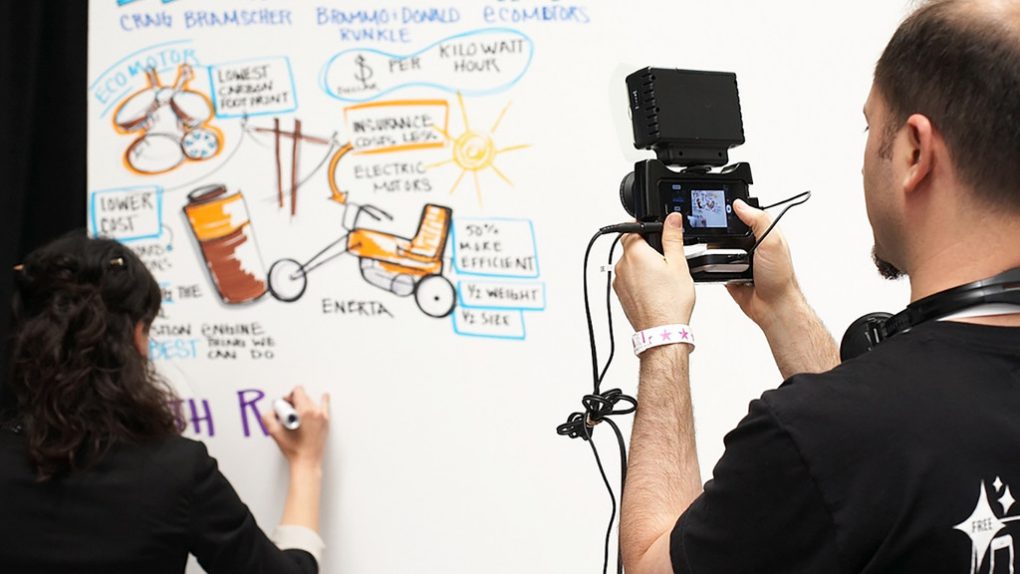
Sam Horvath: Yeah.
Nora Herting: It’s probably also one reasons why it’s so riveting.
Drawing: the new old technique
Nora Herting: But back to this right. In this case we’re not even just talking about watching the ImageThink Team work, but we’re getting people to do some type of drawing and it’s a new old technique, right?
Nora Herting: It’s new in the space that they’re in. They haven’t potentially accessed this for a long time. If they’re like us, there’s a lot of typing – how much handwriting is even happening?
Nora Herting: So, they’re being asked to do this, and it has tremendous benefits, but it’s also very old. This is accessible to all of us. We all did this at a certain point in our in our development as humans and we did this in our development as a species very early and it’s incredibly fundamental.
Drawing hesitations: how people who “can’t” draw participate
Sam Horvath: We all did this. It’s fundamental. We all drew as children and we as a species drew, in the childhood and infancy of our development as a species.
Sam Horvath: I hear it on plenty of calls I’m on with clients or prospective clients. I know you’ve heard it in the room. “I can’t draw.” “I’m not an artist.” “Oh, I couldn’t do what you do.” “I can’t even draw a stick figure.” I hear people say, “Oh, it’s amazing that you guys do all this – I can’t even draw a stick figure.”
Sam Horvath: How does that individual participate? How do you help them to break down barriers? You know, the mental block that’s keeping them from drawing. How can somebody who feels that way and is listening get started and start activating these neurons to boost their, you know, creativity and serotonin?
An exercise analogy
Nora Herting: Yeah, I mean, we do hear this all the time, but I guess – I don’t mean to be glib, but I want say, what do you do for exercise, Sam?
Sam Horvath: Me? Well, I go for a run. Or I stretch, you know.
Nora Herting: OK. Did you, did you get a gold medal in the 400-yard/meter dash?
Sam Horvath: Yes, world record. No. Of course not, of course not.
Nora Herting: Yeah, exactly like great. Of course you didn’t. You’re not the best at that, right? But you do it.
Nora Herting: Why do you run? Well, because it makes you feel good, I’m guessing.
Nora Herting: You know, there’s health benefits; potentially mentally and physically. And it’s the same thing with drawing.
Why people who “can’t” draw are the perfect participants
Nora Herting: I think that those are the perfect people to participate because one is, we want to get you thinking and using different aspects of your mind; different neurons, different approach.
Nora Herting: And so, if it’s foreign to you, I think there’s even more benefit of that. If you’re bringing people in to look at a problem or relate differently, you want to give them something that feels really different. So those are perfect people.
Drawing is not about the artistry
Nora Herting: The other thing, in workshops or keynotes where I talk about this as a tool for leaders is to really stress – and you know this in our team with ImageThink but the real power of what we’re doing is not about the art. It’s not about the artistry, it’s really about the impact that it has in communicating to other people and aligning people and getting results from people.
Nora Herting: And so, if I’m talking to leaders or communicators and they have an outcome that they want to get and say, that is what this is in service of, it’s not about it being beautiful.
Nora Herting: It’s about: is this going to heighten your ability to story tell? Is this going to heighten your ability to connect with others? Is this going to be a meaningful communication piece to align people around your vision? The answer is yes, right?
Nora Herting: It can be, and it doesn’t matter how elegant it is. Then, I think people really feel much more confident about it as a tool, and as a method to communicate and can let go of this expectation that it has to look a certain way.
Nora Herting: Just like, when I run, I have no expectation that I’m going to win anything at all from running other than like the prize of running. We all do things that we enjoy that you know we’re not going to be a gold medalist in.
Tying the drawing to your intent
Nora Herting: So that’s how to approach it is really kind of a campaign around letting go of what the idea is about the drawing and tying it to the intent. And that is what I say is visual leadership.
Nora Herting: It’s not about the artistry, it’s about understanding what’s happening, when you’re drawing or you’re using a drawing and using that for real impact.
Drawing is about communicating ideas
Sam Horvath: Yeah, I think that’s a really good distinction. When you started with a sports or athletic/exercise metaphor – I think one, it’s a good idea of a practice and that idea of “don’t let perfect be the enemy of good.”
Sam Horvath: You go out running because you know that you should or you want to or you know how it can impact your well-being and so, I think that’s a great point.
Sam Horvath: And then I’m also thinking; that trended me onto thinking about – we’re getting into football season. You look at play charts and stuff in a playbook – it’s Xs and Os and arrows, right? These offensive and defensive coordinators, they’re not artists. It’s not about having a beautiful playbook with gorgeous illustration.
Sam Horvath: But, can you communicate the idea in a way that’s like: “This is why this play will work. This is where the team needs to go.” and get 11 players on the field to run in the same direction or run in different directions, but towards the same goal, maybe, I don’t know.
Sam Horvath: I lost my metaphor towards the end.
ImageThink’s work with Quest Diagnostics
Nora Herting: I feel like you’re truly a football fan. Football season started like 2 weeks ago, or last weekend. I really know this now because ImageThink just worked for Quest Diagnostics and the New York Giants. And it was the first time I was ever in a stadium – I was like on the field of it. It’s kind of wild. That’s as close as I want to get though.
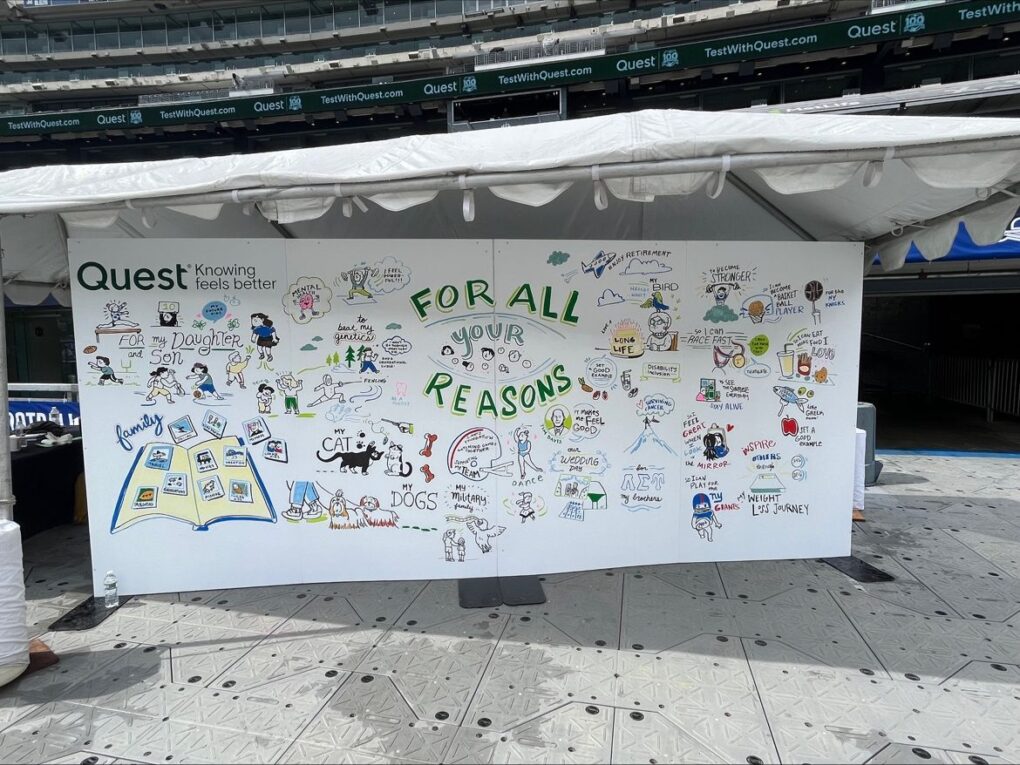
Sam Horvath: Yeah, I haven’t been to a stadium probably since my junior senior year, but it was a big one. I went to Penn State, so it was –
Nora Herting: Right.
Sam Horvath: They’re loud coliseums, but they could be very fun.
What happens when you get folks to draw?
Sam Horvath: You just named one recent job. But on that trend, I guess sticking with the theme of getting people drawing, is there a specific short client story? To put pen to paper, to make the example real and get out of the abstract. Is there a story you can tell when you got some folks drawing?
Sam Horvath: Whether it was you in a workshop, whether it was just having a graphic recorder onsite, but people started contributing with their own visuals, where getting people working visually had an impact? What was the context? What was the challenge? How did it go? And did you hear anything about the impact afterwards?
Drawing your role: a short story
Nora Herting: Oh well, this is a small story, but I think it really underscores what we’ve been talking about, just in terms of the nuances that can be expressed.
Nora Herting: We were doing a workshop with a group. There was a person there who was basically the administrator. The admin for the group had done a lot of the coordinating and was really sitting in the room I think to check his emails and attend to coffee – you know, all of those things.
Nora Herting: And when they went around and asked everyone to draw a picture of their role, what he drew was just this chaotic scribble, and said, “This is what – I am running in circles all the time. This is basically my role.”
Nora Herting: And there was just – you could feel everybody inhale in the room and look at each other. I felt like they finally saw that this person was really, really underwater [and saw] what they were putting on him.
Nora Herting: And so, that always resonated with me. How powerful that moment was, and his depiction of his role, and how he was seeing it at the time, and how people were literally able to see that.
Drawing the difference: words vs. pictures
Sam Horvath: Yeah, that’s a good st- I mean, it ties everything together from what you said. I mean that is literally – had it just been words, people might have all nodded along and said, like, “Yeah, we know what you do. Yeah, we get it.” you know. But when it’s visualized, it kind of unveils a little bit of the psyche and more of the person, right?
Sam Horvath: So, I like that. That’s great.
